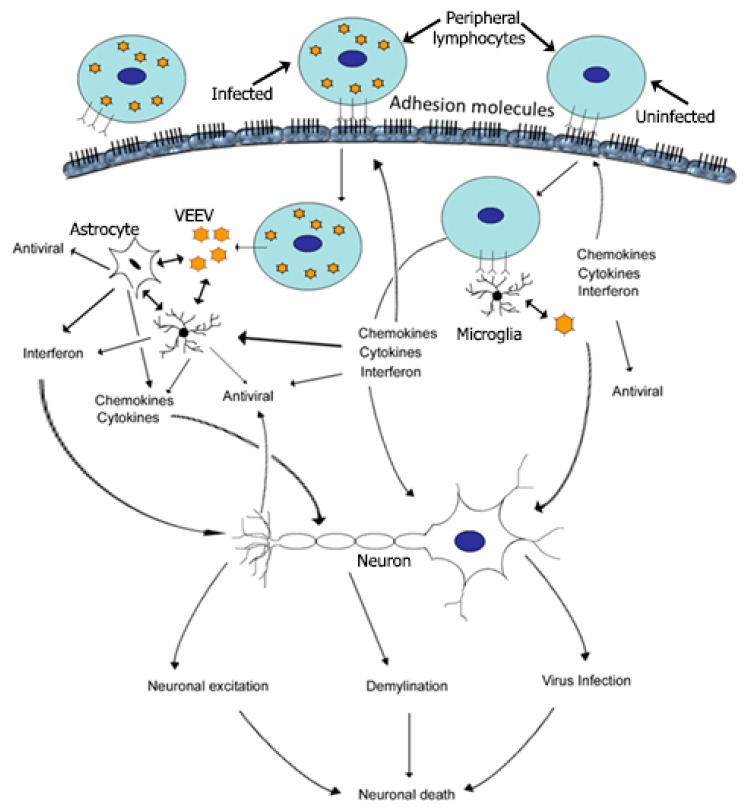Figure 5.
Role of BBB in VEE. Endothelium of the BBB is actively involved in the inflammatory reaction during the CNS phase of VEEV infection. VEEV primarily enters the brain via the olfactory tract replicating first in the olfactory bulb of the brain. Presence of the virus in the brain is detected by the resident glia, the immune cells of the brain. Activation of glial cells release chemokines and cytokines that initiate the first steps of CNS inflammation. The initial inflammatory response probably initiates the alteration in the BBB. Chemokines such as MCP-1 have been shown to be directly involved in opening the BBB. Chemokines and cytokines activate brain microvascular endothelium, resulting in up-regulation of adhesion molecules such as ICAM-1. Ligands of ICAM-1 are expressed on peripheral circulating activated–leucocytes, which may or may not be infected with VEEV. Binding of circulating leucocytes with the brain microvascular endothelium elicits a cascade of events resulting in the transmigration of these cells across the BBB. In the third phase, inflammation and viral load in the brain is augmented by the transmigrating leucocytes. Infected leucocytes increase the viral load in the brain, which further activates the glia resulting in increased inflammatory reactions in the brain. Microglia are antigen presenting cells and may further contribute to an increase in inflammation by presenting the virus to peripheral leucocytes entering the brain and to the resident astrocytes. These events result in a continuous cycle of release of inflammatory cytokines and chemokines in the brain reaching a point where neurons may undergo inflammatory mediated cytotoxic damage in addition to apoptosis induced by direct virus infection.

